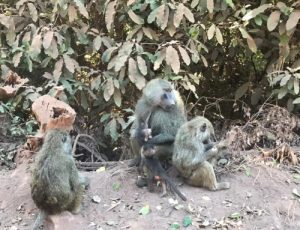Factors Affecting Climbing Time on Kilimanjaro
Climbing Mount Kilimanjaro, Africa’s tallest peak, is a challenging and rewarding adventure that attracts thousands of climbers each year. The time it takes to reach the summit of Kilimanjaro can vary depending on several factors. These factors can include the chosen route, the climber’s fitness level, altitude acclimatization, weather conditions, and overall pace of the climb. Understanding these factors can help climbers better prepare for their ascent and increase their chances of reaching the summit successfully.
Route Selection
There are several routes to choose from when climbing Kilimanjaro, each with its own difficulty level and duration. The Marangu route, also known as the "Coca-Cola route," is the most popular and typically takes around five to six days to reach the summit. The Machame route, known as the "Whiskey route," is longer and more challenging, usually taking six to seven days. The Lemosho and Rongai routes are also popular options, with durations ranging from six to eight days. The longer routes generally allow for better acclimatization and increase the chances of reaching the summit.
Climber’s Fitness Level
The climber’s fitness level is another crucial factor that can impact the climbing time on Kilimanjaro. A good level of physical fitness is essential to tackle the steep and demanding terrain of the mountain. Climbers should be prepared for long days of hiking, often with challenging uphill sections. Regular aerobic exercise, such as hiking, running, or cycling, can help improve stamina and endurance for the climb.
Altitude Acclimatization
Altitude acclimatization is crucial when climbing Kilimanjaro, as the higher altitudes can lead to altitude sickness if climbers ascend too quickly. It is recommended to choose a route that allows for gradual acclimatization, such as the longer Lemosho or Rongai routes. Climbers should also take their time ascending the mountain, allowing their bodies to adjust to the decreasing oxygen levels. Adequate hydration, rest, and proper nutrition can help prevent altitude sickness and increase the chances of reaching the summit.
Weather Conditions
Weather conditions on Kilimanjaro can vary greatly, with temperatures ranging from hot at the base to freezing at the summit. Climbers should be prepared for all types of weather, including rain, snow, and strong winds. Weather conditions can impact climbing time, with adverse weather potentially slowing down the ascent or even forcing climbers to turn back. It is essential to pack appropriate clothing and gear for all types of weather conditions to ensure a safe and successful climb.
Average Duration to Summit Africa’s Tallest Peak
On average, it takes around five to eight days to climb Kilimanjaro and reach the summit. The exact duration can vary depending on the factors mentioned above, as well as individual pace and overall fitness level. Sunset Africa Safari offers guided climbing tours to Kilimanjaro, providing experienced guides, porters, and support staff to assist climbers every step of the way. For booking requests and more information, clients can contact Sunset Africa Safari at info@sunsetafricasafari.com.
In conclusion, climbing Mount Kilimanjaro is a challenging and unforgettable experience that requires careful planning and preparation. By considering the factors affecting climbing time on Kilimanjaro, climbers can increase their chances of reaching the summit successfully and enjoying the stunning views from Africa’s tallest peak.


